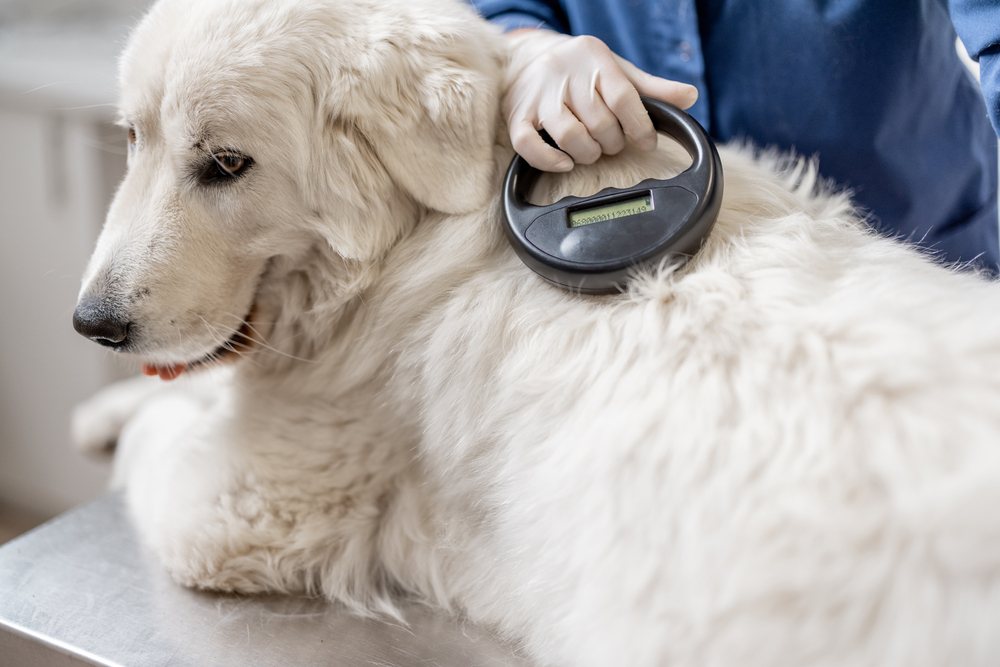Losing a pet can be a heartbreaking experience, but fortunately, technology has made it easier to ensure the safe return of our furry friends. Microchipping is a simple and effective way to ensure that your pet can be identified and returned to you if they ever get lost.
In this comprehensive guide, we will discuss the importance of microchipping your pet and provide step-by-step instructions on how to do it, from the microchipping procedure to registering the chip with a national database. Whether you’re a new pet owner or just haven’t gotten around to it yet, read on to learn why microchipping your pet is an essential step in ensuring their safety and well-being.
What Is A Microchip?
First, let’s talk about what microchipping is. A microchip is a small, rice-sized chip that is implanted under the skin of your pet, usually between the shoulder blades. The chip contains a unique identification number that is linked to your contact information in a national database. This means that if your pet is ever lost or stolen, it can be easily identified and returned to you. Additionally, you can update your pet’s microchip to make sure all identifying information is up-to-date.
What Is The Importance Of Microchipping Your Pet?
The importance of microchipping your pet cannot be overstated. It is estimated that one in three pets will become lost at some point in their lifetime. Without proper identification, only about 22% of lost dogs and 2% of lost cats are reunited with their owners. With a microchip, however, the reunion rate jumps to 52% for dogs and 38% for cats. Microchipping your pet greatly increases the chances of being reunited with them if they ever get lost.
Another important aspect of microchipping is that it can help your pet in case they get injured or need medical attention. If your pet is found and taken to a vet or animal shelter, they will likely be scanned for a microchip. This will allow them to quickly identify your pet and contact you for further instructions. Additionally, if your pet has any medical conditions or allergies, this information can be stored on the microchip, allowing vets to provide the best possible care.
How Do You Go About Microchipping Your Pet?
Now that we’ve discussed the importance of microchipping, let’s talk about how to do it. The process is relatively simple and is similar to getting a vaccination. The microchip is injected under the skin using a hypodermic needle, and the process takes only a few seconds. The procedure is typically done by a veterinarian, but some animal shelters also offer microchipping services.
It’s important to note that microchipping is not painful for your pet and does not require any anesthesia. Some pets may experience mild discomfort or soreness for a few days after the

Registering Your Pet’s Microchip
In Australia, there are several national pet microchip registries that pet owners can use to register their pet’s microchip. The most common ones are:
- Central Animal Records (CAR)
- PetLink
- National Pet Register (NPR)
The process of registering a pet’s microchip in Australia is relatively simple and straightforward. Here are the general steps to follow:
- Obtain the microchip number from your vet or animal shelter. This number is usually found on the microchip certificate or on the microchip scanner readout.
- Choose a national pet microchip registry, such as CAR, PetLink or NPR.
- Visit the registry’s website and create an account.
- Once you have an account, you can then enter your pet’s microchip number and other relevant information, such as their name, breed, and colour.
- Next, you will be prompted to enter your contact information, including your name, address, and phone number.
- Once you have completed the registration process, you will receive a confirmation email or letter.
- It’s important to keep your contact information up to date in the national database so that you can be reached in case your pet is found. If your contact information changes, you should log into your account and update it.
It’s important to note that in Australia, microchips are mandatory by law and should be done by a veterinarian. Some animal shelters also offer microchipping services.
Microchipping will ensure that your contact information is linked to the microchip and that your pet can be easily identified if they are ever lost. It’s also important to keep your contact information up to date in the national database so that you can be reached in case your pet is found.
Final Thoughts
Microchipping your pet is an essential step in ensuring their safety and well-being. It greatly increases the chances of being reunited with them if they ever get lost and also helps them to get the best medical attention if they ever need it. The process is simple and relatively painless, and registration of the microchip with a national database is easy. If you haven’t already, make sure to microchip your pet as soon as possible. It could make all the difference in the world.
If you have any questions about microchipping, or want to get your pet microchipped, don’t hesitate to contact us here at Toorak Road Vet Clinic. Our experts are more than ready to assist you in this process.
Please do not hesitate to call us today on (03) 9809 2700 or make an appointment.

